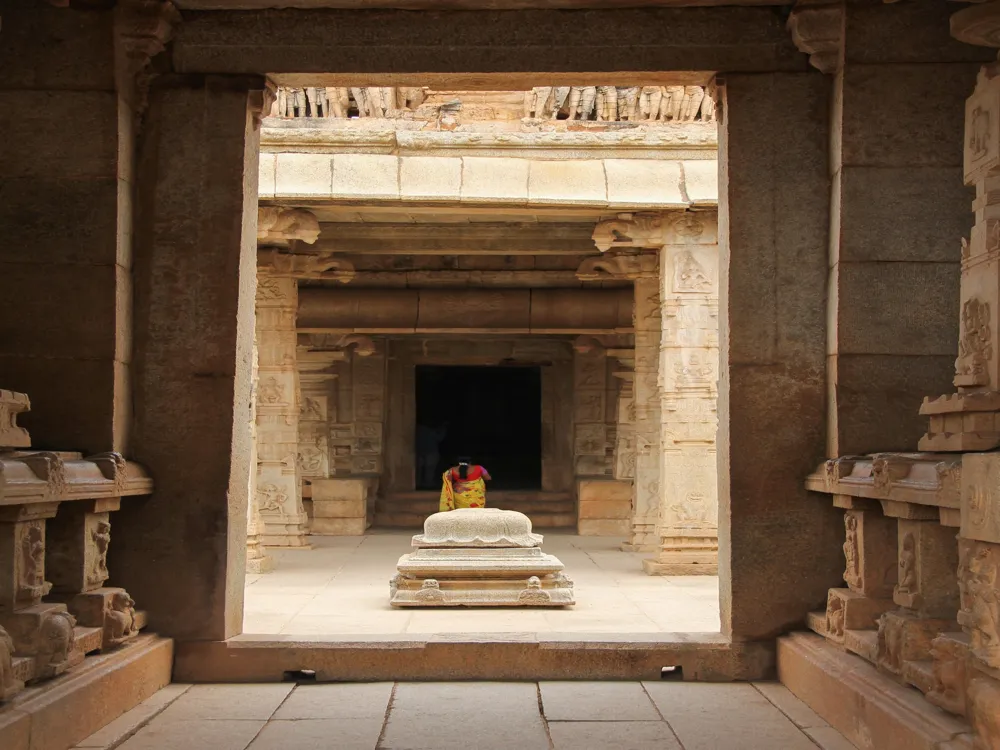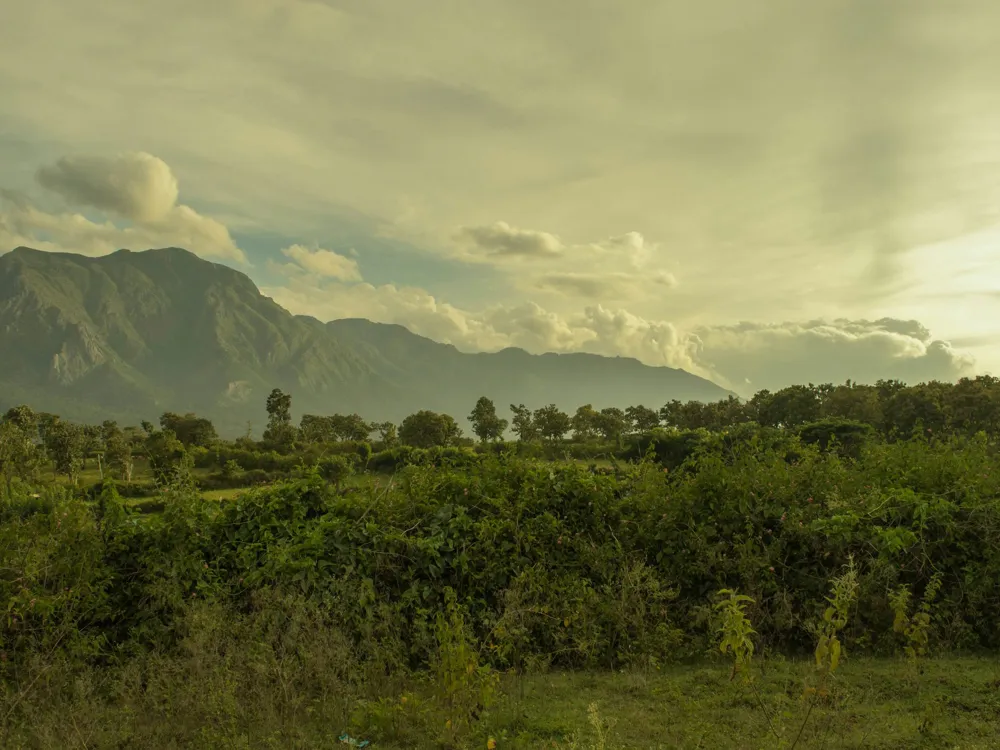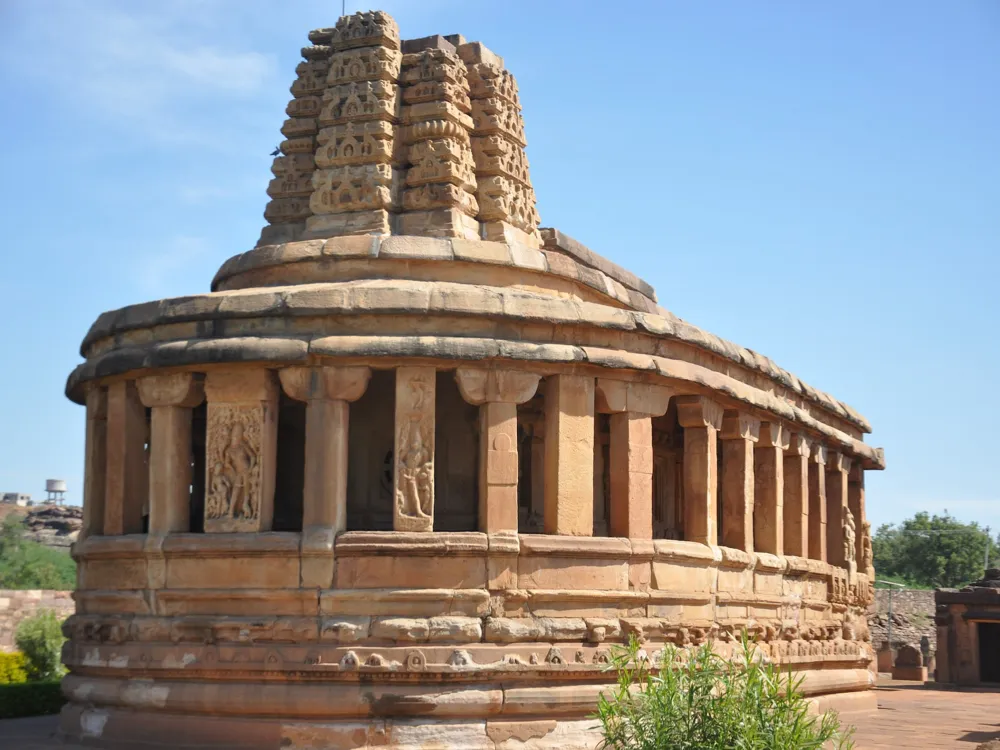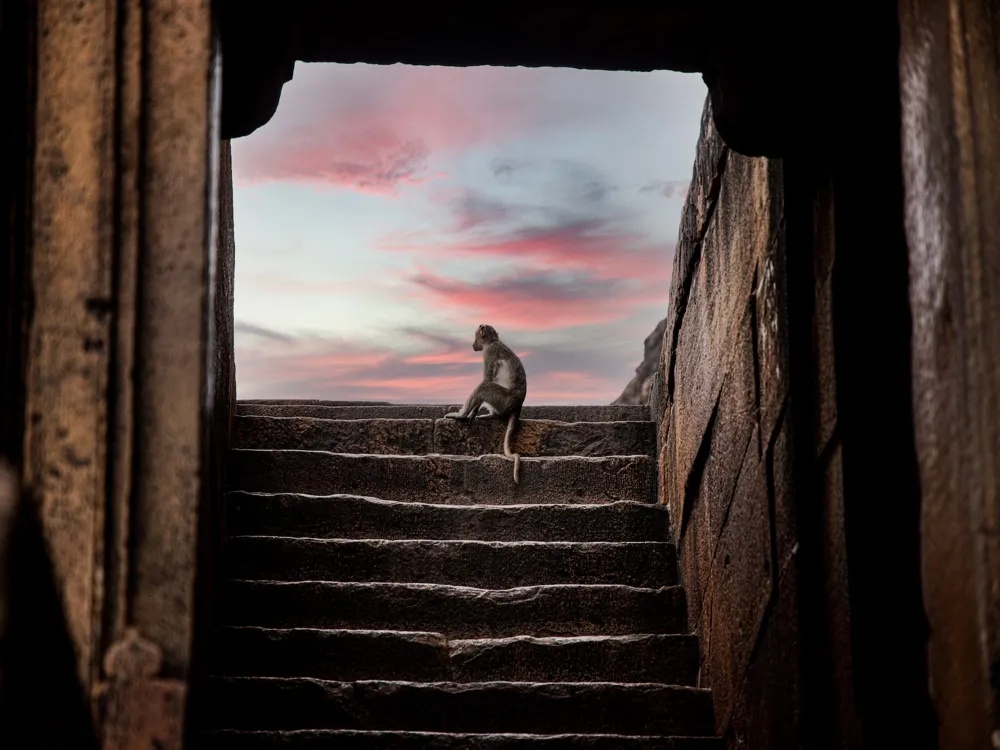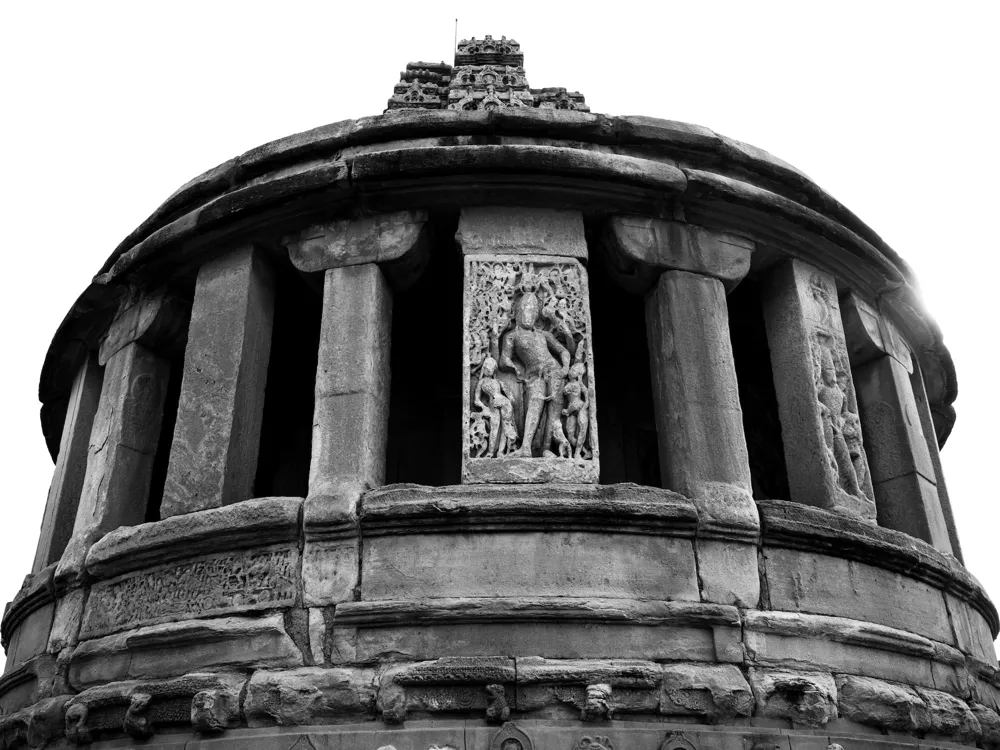Hampi, a UNESCO World Heritage Site located in Karnataka, India, is a treasure trove of history, culture, and breathtaking ruins from the Vijayanagara Empire. Known for its vast archaeological significance, Hampi's landscape is dotted with ancient temples, forts, and remnants of a once flourishing civilization. Situated on the banks of the Tungabhadra River, it attracts thousands of tourists, historians, and archaeology enthusiasts annually. This historical city was one of the richest and largest cities in the world during its prime in the 15th century. Its ruins, spread over 4,100 hectares, are a unique amalgamation of history, mythology, and religion, making it a fascinating destination for travelers from around the world. Hampi's history dates back to the early 14th century, when it was the capital of the Vijayanagara Empire. Founded by Harihara I and Bukka Raya I, the empire played a significant role in the history of Southern India. Hampi, as its capital, was a pivotal trade center noted for its grandeur, wealth, and multi-cultural lifestyle. The city's history is replete with tales of opulence, strategic political alliances, and resistance against invaders. Hampi was not just a political capital but also a center for art and culture, attracting artisans, poets, and scholars from far and wide. Hampi is also deeply ingrained in Indian mythology. It's believed to be the site of the ancient kingdom of Kishkindha, associated with the Hindu epic Ramayana. The city's historical and mythological connections make it a unique blend of reality and legend, adding to its allure and mystery. The decline of Hampi began in the 16th century after the Battle of Talikota. The city faced a catastrophic defeat at the hands of the Deccan Sultanates, leading to its decline and eventual abandonment. What remains today are the ruins that tell the tales of its past glory. Hampi's architectural heritage is a testament to the ingenuity and craftsmanship of the Vijayanagara era. The city's ruins encompass over 1,600 structures that include temples, palaces, markets, and public spaces. Hampi's architecture is characterized by its grandiose scale and intricate details, blending various architectural styles. Temples in Hampi are renowned for their large dimensions, intricate carvings, and grand gopurams (temple towers). The Virupaksha Temple, still in use today, is a prime example of this style. These temples were not just places of worship but also served as cultural hubs where music, dance, and education flourished. Beyond temples, Hampi's landscape is punctuated with an array of civil and military buildings. The Lotus Mahal, an exquisite blend of Hindu and Islamic architecture, and the Queen’s Bath, a large bathing area used by the royals, are notable examples. The city's fortifications, with sophisticated military architecture, speak volumes about the era's strategic planning and warfare techniques. The sculptures and reliefs in Hampi are remarkable for their attention to detail and storytelling capability. Scenes from Hindu epics, depictions of gods and goddesses, and portrayal of daily life scenes are common themes found in Hampi's art. Hampi was ahead of its time in terms of architectural innovations. It had an advanced aqueduct system and ingenious methods for water management, essential in the semi-arid landscape. The city's planning was methodical, with separate areas designated for religious, royal, and civic purposes. The ideal time to visit Hampi is from October to February when the weather is pleasant. Summers can be extremely hot, making exploration difficult. Options range from budget guesthouses to luxury resorts. Staying in the nearby town of Hospet can also be convenient for accessing Hampi. Bicycles and scooters are popular for getting around Hampi. Auto-rickshaws and guided tours are also available. Visitors should dress modestly and be respectful of local customs, especially when visiting temples. Consider hiring a guide to gain deeper insights into Hampi's history and architecture. Hampi is well-connected by road, rail, and air. The nearest airport is in Bellary, about 60 km away. Hospet, 13 km from Hampi, is the nearest railway station with good connectivity to major cities. By road, Hampi is accessible via state-run and private buses from major cities in Karnataka. For international tourists, connecting to Hampi from Bangalore, the state capital, is the most convenient option.Overview of Hampi, Karnataka
Rich Historical Significance
Mythological Connections
The Fall of Hampi
Architecture of Hampi
Temple Architecture
Civil and Military Structures
Art and Sculpture
Innovation in Architecture
Tips When Visiting Hampi
Best Time to Visit
Accommodation
Local Transportation
Respect Local Culture
Guided Tours
How To Reach Hampi
Bike Riding
Hampi
Karnataka
NaN onwards
View hampi Packages
Weather :
Tags : Local Experience
Time Required : 1 - 2 hrs
Planning a Trip? Ask Your Question
Hampi Travel Packages
View All Packages For Hampi
Top Hotel Collections for Hampi

Private Pool

Luxury Hotels

5-Star Hotels

Pet Friendly
Top Hotels Near Hampi
Other Top Ranking Places In Hampi
View All Places To Visit In hampi
View hampi Packages
Weather :
Tags : Local Experience
Time Required : 1 - 2 hrs
Planning a Trip? Ask Your Question
Hampi Travel Packages
View All Packages For Hampi
Top Hotel Collections for Hampi

Private Pool

Luxury Hotels

5-Star Hotels

Pet Friendly







